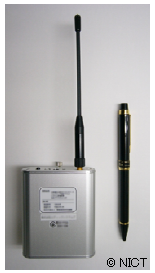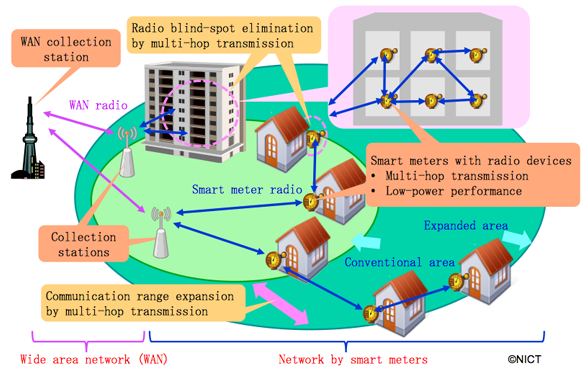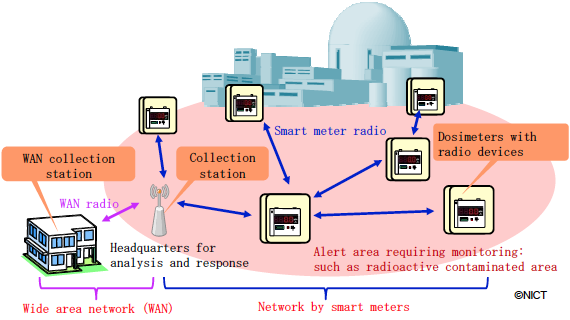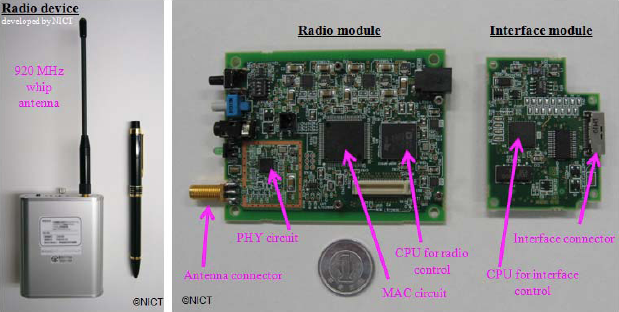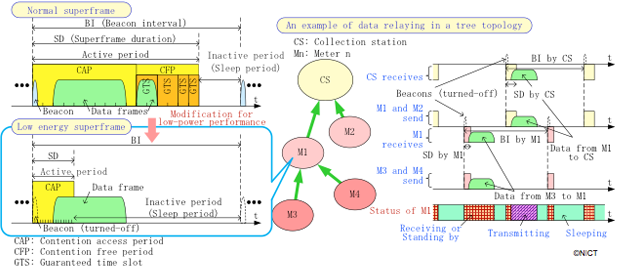Recently, reducing excessive energy consumption by controlling meters of electricity, gas and water in homes and buildings has been of great importance to environmentally-friendly technologies. NICT has conducted research and development on the smart meter system with radio communication technologies that effectively and surely realizes automatic and autonomous control, data reading and monitoring on each meter. Such NICT’s efforts have been reflected on standardization activities in IEEE 802 committee and been successfully adopted in IEEE 802.15.4g/4e drafts.
In Japan, “950 MHz band” allocation for RFID system was originally considered to be suitable for the allocation of smart meter utilities. However, MIC (Ministry of Internal affairs and Communications, Japan) officially announced “920 MHz band” allocation for smart meter usage in Jan. 2012 for the benefit of the international cooperation and competitiveness. Accordingly, NICT, domestic users and manufacturer companies have submitted a unified proposal for clear and effective 920 MHz utilization to IEEE 802.15.4g/4e task groups. As a result, those task groups have finalized IEEE 802.15.4g/4e drafts (to be finalized as standards in Mar. 2012) defining such “920 MHz band” allocation. Although significance of standardization and realization of the smart meter system is confirmed with the establishment of "Wi-SUN alliance" in Jan. 2012, any radio device compliant to such finalized IEEE 802.15.4g/4e standards has not been developed yet.







